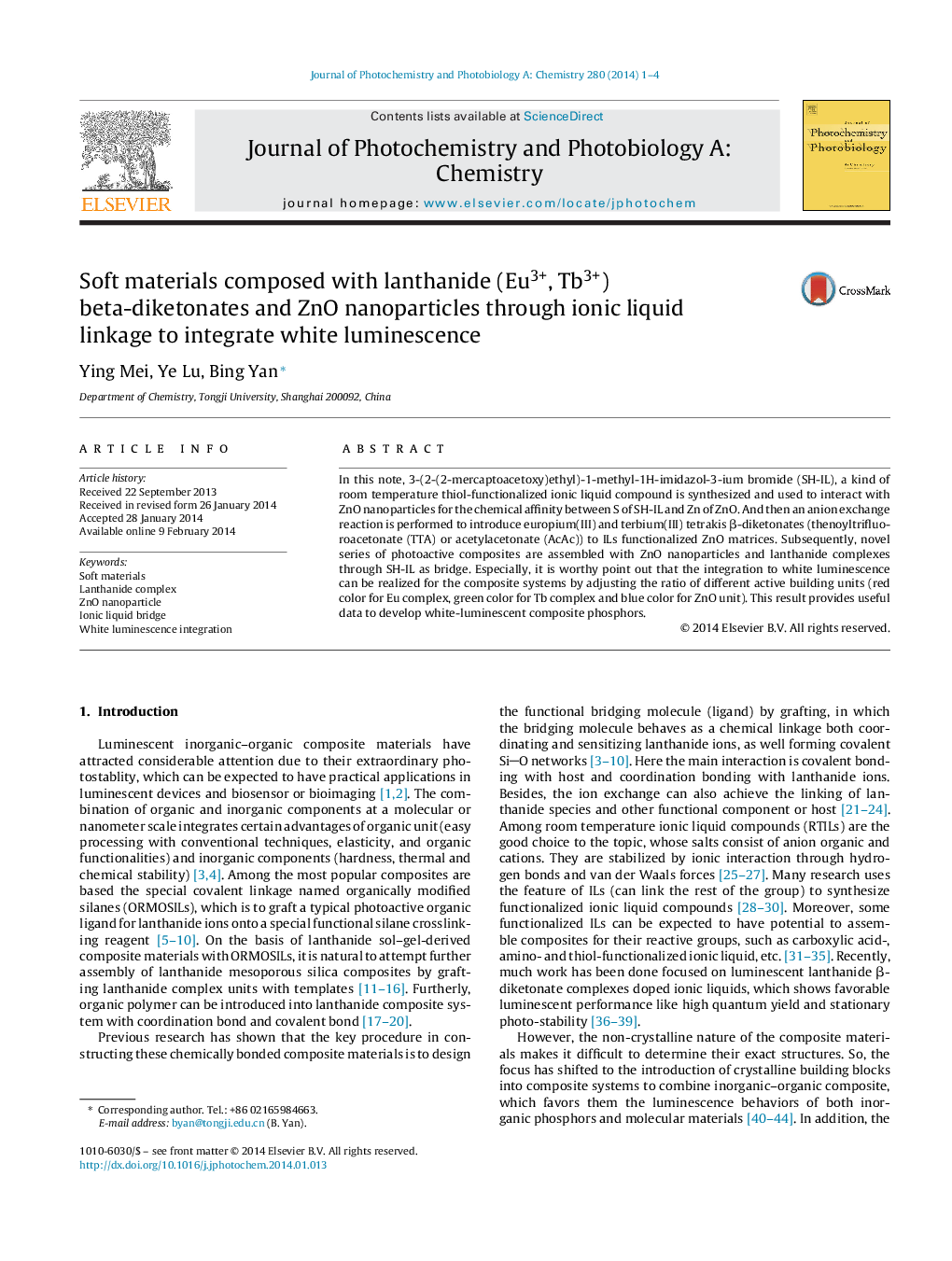| Article ID | Journal | Published Year | Pages | File Type |
|---|---|---|---|---|
| 26621 | Journal of Photochemistry and Photobiology A: Chemistry | 2014 | 4 Pages |
•3-methyl-1-(2-(thiocarboxyoxy)ethyl)-1H-imidazol-3-ium bromide behaves as linkage.•Europium and terbium tetrakis β-diketonate is assembled with ZnO nanoparticle.•The integration to white luminescence of the hybrid systems can be realized.
In this note, 3-(2-(2-mercaptoacetoxy)ethyl)-1-methyl-1H-imidazol-3-ium bromide (SH-IL), a kind of room temperature thiol-functionalized ionic liquid compound is synthesized and used to interact with ZnO nanoparticles for the chemical affinity between S of SH-IL and Zn of ZnO. And then an anion exchange reaction is performed to introduce europium(III) and terbium(III) tetrakis β-diketonates (thenoyltrifluoroacetonate (TTA) or acetylacetonate (AcAc)) to ILs functionalized ZnO matrices. Subsequently, novel series of photoactive composites are assembled with ZnO nanoparticles and lanthanide complexes through SH-IL as bridge. Especially, it is worthy point out that the integration to white luminescence can be realized for the composite systems by adjusting the ratio of different active building units (red color for Eu complex, green color for Tb complex and blue color for ZnO unit). This result provides useful data to develop white-luminescent composite phosphors.
Graphical abstractFigure optionsDownload full-size imageDownload as PowerPoint slide
